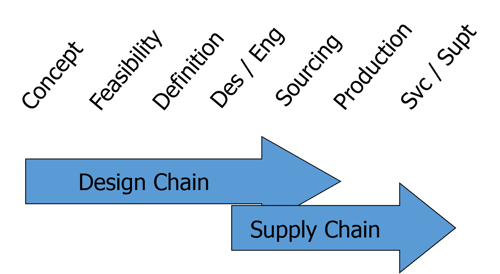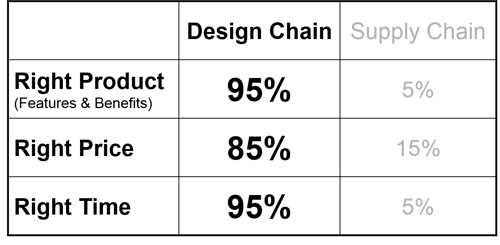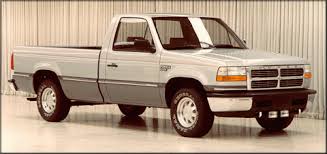Lean Product Development Value Chain
Manufacturers have known for years that one of the primary tenets of Lean is to identify what the customer values, and create a way to consistently and efficiently deliver that value. Unfortunately, we have spent decades perfecting the wrong end of that value chain. I’ll explain why, and what you can do now to change that.
The Customer Value Chain
In a previous post I discussed how most initiatives in manufacturing companies were focused on reducing cost. (That’s fine, most customers value lower prices!) And one of the oldest and most common initiatives is Supply Chain Management (SCM). It gained popularity over twenty years ago and has many goals in common with Lean - especially around eliminating waste, and therefore cost, in the supply chain.
But when we consider the entire customer value chain, we have to include all of the steps upstream in the New Product Development (NPD) process. And you can see in the image below, SCM includes only the end of that process. The NPD steps from Concept to Sourcing are handled by what we could call the Design Chain.

Since we all agree that focusing on customer value is paramount, let’s begin to define what a customer actually values. A common way to define that is to say they want the right product, at the right price, at the right time. So let’s look at the relative impact of the Supply Chain vs the Design Chain on those three elements…
Right Product
I would guess that 95% of the reason someone buys a product is because of the features and benefits created by the design chain. The supply chain might impact a purchase decision based on how quickly they can build and ship that product when someone is ordering it, but most of the reasons they select it in the first place are because of what the design chain did when they developed it.
Right Price
The impact the two chains make on price is easier to quantify. An often quoted DARPA Study showed that you lock in 85% of the cost of a product by the end of the detailed design phase. This means that all the cost reductions in the supply chain would only amount to a small portion of the opportunity by focusing on cost earlier in the design chain.
Right Time
This one is big. Unless you have a monopoly in the market, your competition is coming out with products that will impact your sales. Don Reinertsen showed us how to quantify this Cost of Delay (COD) and we have a blog post on how to calculate it here. And it usually shows that the impact of delay to your bottom line is many times higher than the impact of higher product cost or missing features. So if you use the example of a product that took forty weeks to development, but can be sourced, built and shipped in two weeks, the relative impact of the design vs supply chain is 20:1.
So, when we look at these three elements combined, we can see how much more important the design chain is than the supply chain…!

A Better Example
But numbers in tables don’t always tell the best story, so let’s look at a classic real world example that many of us may remember.
Take a minute and try to guess what pickup this is…

It’s a Dodge that was never produced. But if you guessed an older Ford or Chevy you wouldn’t be far off because the focus groups said it “looks just like the competitor’s trucks.” And luckily for Dodge, management sent the design team back to the drawing board where they came up with this…

That’s right, the 1994 Ram. It’s been called, “the most important new product launch in the history of the Chrysler Corporation, maybe the entire industry.”
Why?
Because in 1993, Dodge had 7% of the pickup market, but they tripled their sales the next year and captured 20% of the market! Think about that for a minute. Most companies would be happy to increase market share 20%, but they tripled it with one product release!
Now think again about the design chain vs supply chain in this scenario. It’s clear that practically every change made between these two versions was made by the design chain.
So back to the original questions…
Why did we focus on the wrong end of the value chain?
Why did we focus on the wrong end of the value chain first, and what can we do about it?
I think the answers to both questions are simple. The reason we focused on the supply chain first is that the problems were much easier to solve so we could do it with the tools available at the time. An accountant with a calculator could figure out that excess inventory was tying up a lot of cash, and therefore a penny saved would actually be more than a penny earned.
But trying to perfect the design chain has taken more complicated tools. 3D CAD created breakthroughs in design. CAE tools created breakthroughs in analysis. And PLM created a better way to manage all of this electronic data.
And finally, (warning—shameless plug!) we have created Playbook, which is the first collaboration technology that enables key Lean and Agile methods developed specifically for product development teams, and is proven to cut development times in half.
Stay tuned for our next post on how to get started with Lean Product Development!
Related articles
Guide to Lean Project Management
Guide to Lean Product Development
Science and economics behind “failing fast”
Lean Product Development the Opportunity of the Century.
Lean Product Development Case Study
Principles of Lean Product Development
Lean Product Development Value Chain
Get started with Lean Product Development
Lean Product Development: Cultural Resistance
4 ways to Ensure Your Lean product Development Initiative Won't Fail



